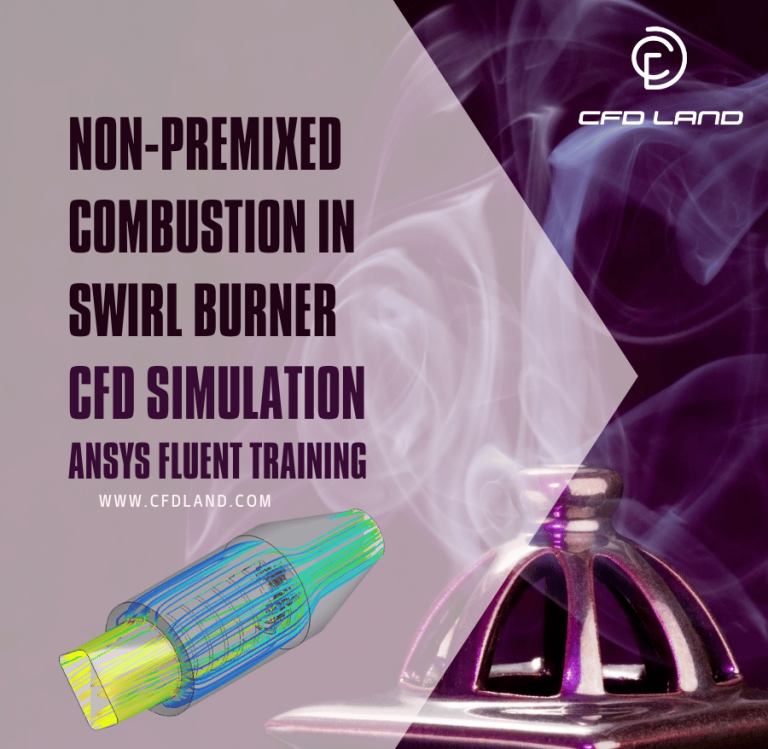Solar Chimney Collector CFD Simulation Training, 2D Analysis with ANSYS Fluent
Solar Chimney Collector CFD Simulation Training, 2D Analysis with ANSYS Fluent
- Upon ordering this product, you will be provided with a geometry file, a mesh file, and an in-depth Training Video that offers a step-by-step training on the simulation process.
- For any more inquiries regarding the product, please do not hesitate to reach out to us at info@CFDLAND.com or through our online support assistant.
€120 Original price was: €120.€65Current price is: €65.
A Solar Chimney CFD simulation is a modern tool used to study renewable energy systems. These power plants use the simple ideas of buoyancy-driven flow and thermal convection. A complete Solar Chimney Simulation model includes three main parts: a tall central chimney, a large and clear solar collector, and turbines to make electricity. The collector acts like a greenhouse, trapping the sun’s energy and heating the air inside. This solar energy simulation shows that the air can get 30 to 70 degrees Celsius hotter than the air outside. This temperature difference causes natural convection, which is the main focus of a natural convection CFD study. The hot, lighter air rises up the chimney, spinning the turbines to generate power.
This report presents a 2D solar chimney CFD analysis using ANSYS Fluent. Our study focuses only on the solar chimney collector CFD part, which is where the most important heat transfer and flow development happen. The objective of this Solar Chimney Fluent project is to simulate this important device using a 2D axisymmetric model with a constant heat flux.

Figure 1: Schematic of the solar chimney collector used for the CFD analysis.
Simulation Process – 2D Solar Chimney Fluent
First, we designed the geometry for our 2D solar chimney CFD model using ANSYS Design Modeler. We only needed to design half of the geometry because we used an axisymmetric model option in the solver. In a Solar Chimney Fluent simulation, this option lets us model a round system by solving it in 2D, which saves a lot of time. Next, we used ANSYS Meshing to create a structured grid. The final mesh for our solar chimney collector Fluent simulation has a total of 40,750 elements.
For the physics setup of this solar energy simulation, we modeled the sun’s heat by applying a constant heat flux to the collector wall. This is a key part of the thermal analysis Fluent setup. It is very important to remember that the main way heat and mass move in a solar chimney is through natural convection CFD. This process happens because the air density changes with temperature. For an accurate Solar Chimney Simulation, it is crucial to set the air density to be dependent on temperature.
Post-processing – Solar Chimney CFD Analysis
The results of our solar chimney collector CFD study show an interesting link between fluid flow and heat transfer. The thermal analysis Fluent results show that the air temperature is highest near the collector’s bottom wall, where the heat is applied. This hot layer of air is less dense, which is what starts the buoyancy-driven flow. The velocity results show a clear pattern: at the collector entrance, the air is almost still (V ≈ 0 m/s), but it speeds up as it moves towards the chimney. The velocity is highest near the chimney inlet because the flow is squeezed into a smaller area and the buoyancy effect is strongest there.

Figure 2: Velocity contours inside the 2D solar chimney CFD model.

Figure 3: Temperature distribution from the Solar Chimney Fluent simulation.
The temperature and density results from this Solar Chimney Simulation are inversely related; where the temperature is high, the density is low. This density difference is what powers the natural convection CFD process. The simulation shows three clear flow regions: a zone near the inlet where the flow starts to develop, a middle region where the buoyancy-driven flow speeds up, and a zone near the chimney where the flow is compressed and reaches its top speed. This behavior clearly shows how the solar chimney collector Fluent model effectively turns solar heat into kinetic energy (air movement).

Figure 4: Air density changes in the Solar Chimney CFD analysis.
We pride ourselves on presenting unique products at CFDLAND. We stand out for our scientific rigor and validity. Our products are not based on guesswork or theoretical assumptions like many others. Instead, most of our products are validated using experimental or numerical data from valued scientific journals. Even if direct validation isn’t possible, we build our models and assumptions on the latest research, typically using reference articles to approximate reality.
Yes, we’ll be here . If you have trouble loading files, having technical problems, or have any questions about how to use our products, our technical support team is here to help.
You can load geometry and mesh files, as well as case and data files, using any version of ANSYS Fluent.
€160 Original price was: €160.€110Current price is: €110.

€360 Original price was: €360.€185Current price is: €185.

€130 Original price was: €130.€85Current price is: €85.

€240 Original price was: €240.€125Current price is: €125.

€245 Original price was: €245.€185Current price is: €185.

€360 Original price was: €360.€185Current price is: €185.



















Reviews
There are no reviews yet.